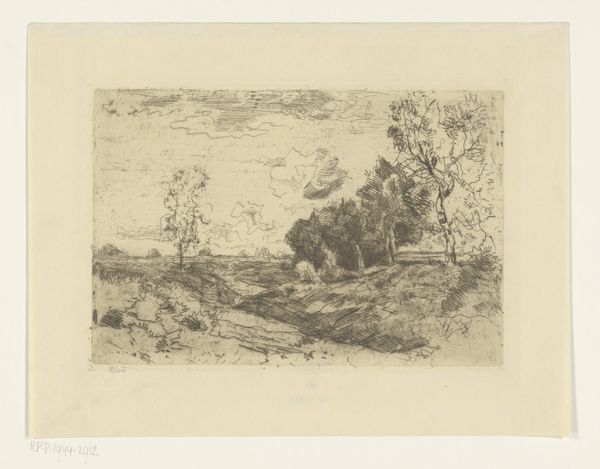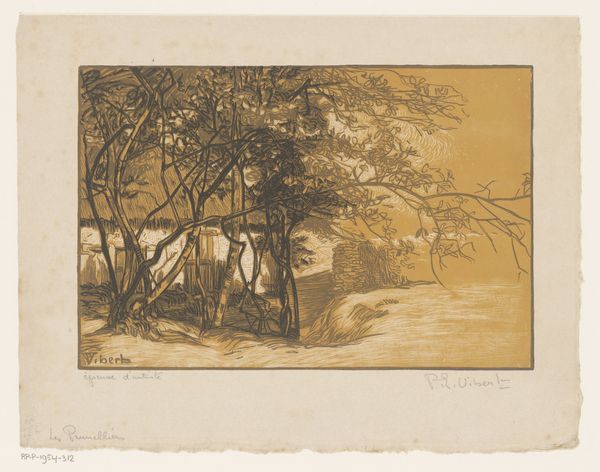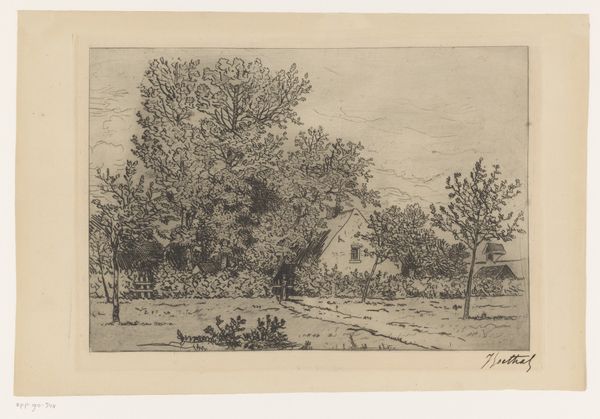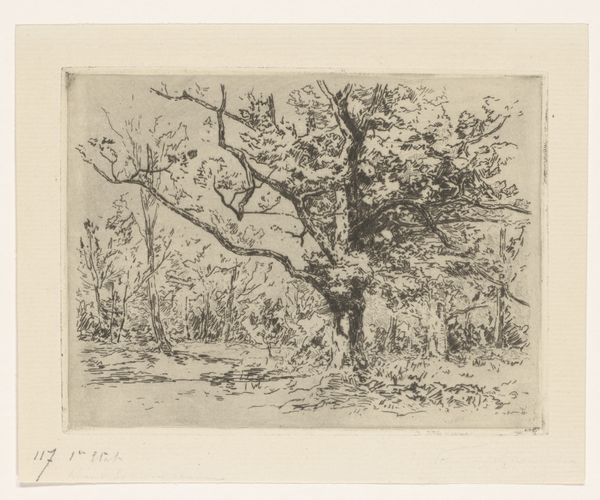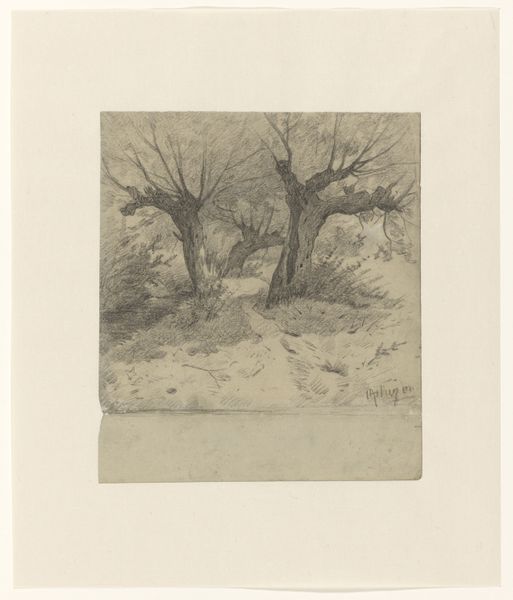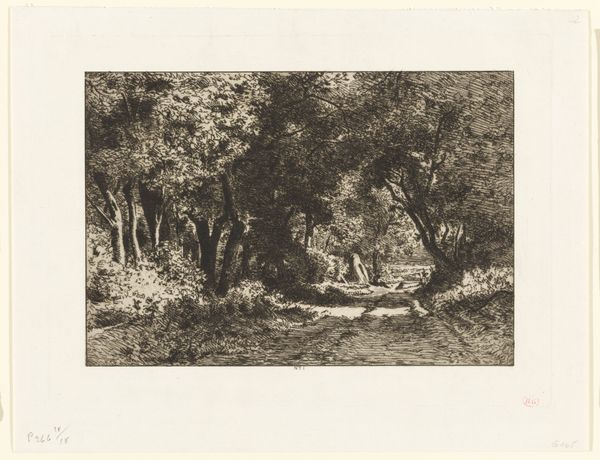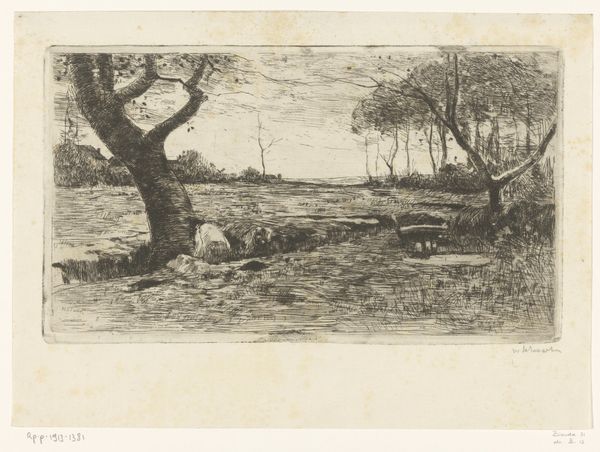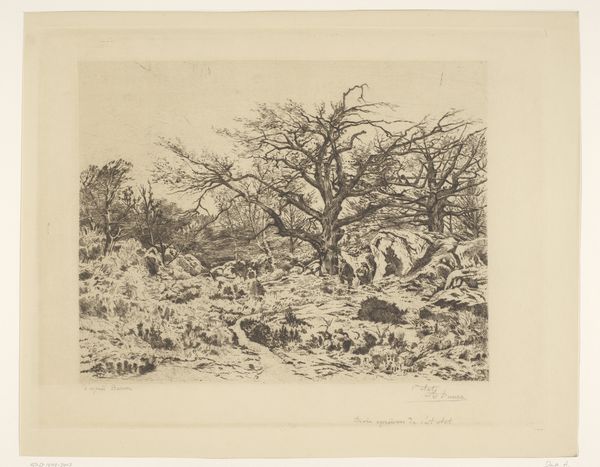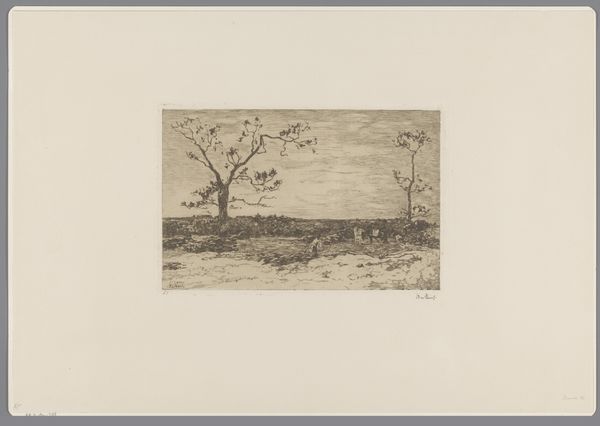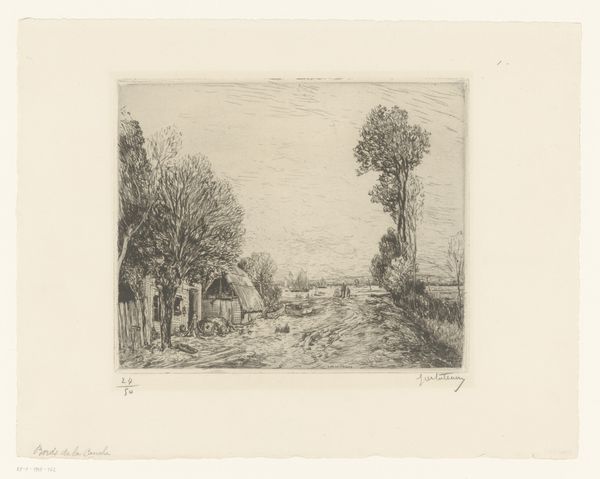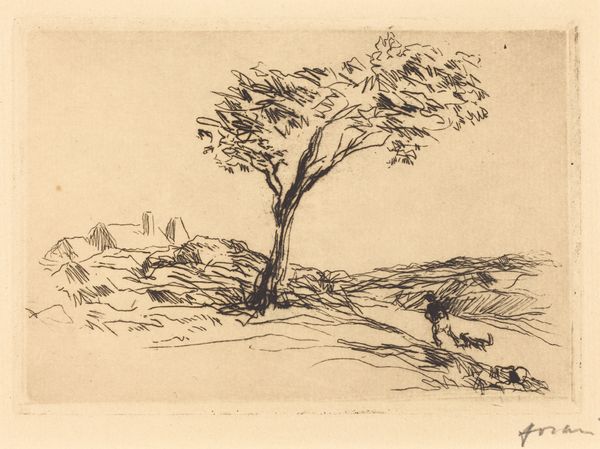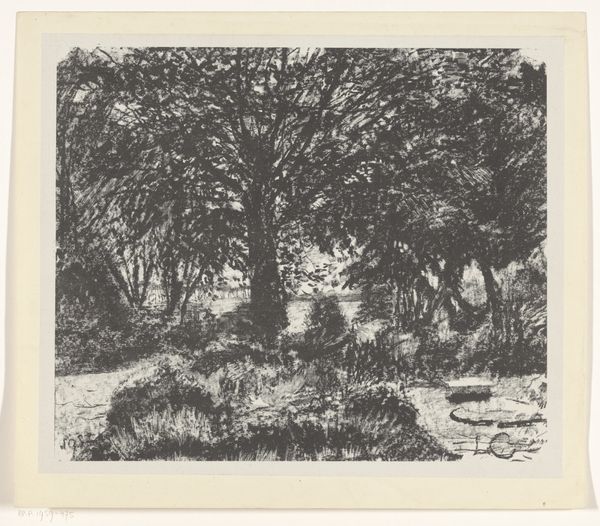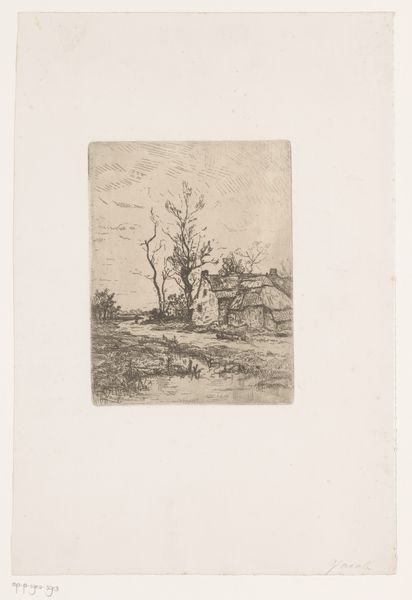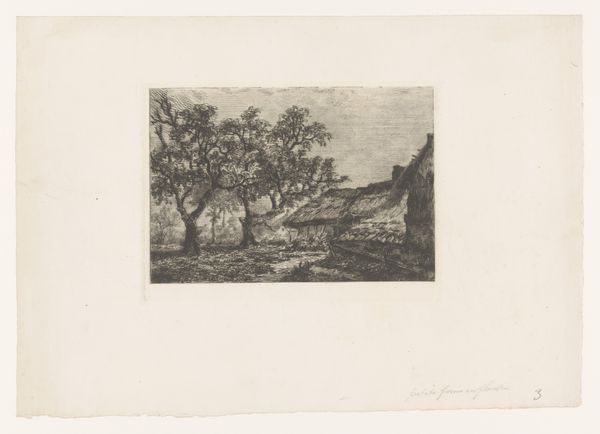
print, etching
# print
#
etching
#
landscape
#
realism
Dimensions: height 116 mm, width 160 mm
Copyright: Rijks Museum: Open Domain
Editor: So, this is "House Behind a Hill near Materborn" by Carel Nicolaas Storm van 's-Gravesande, an etching done sometime between 1851 and 1902. It has a really lonely, almost haunting feel, despite being a landscape. What strikes you about it? Curator: The placement of the house is so intriguing – it is not quite hidden, but rather partially obscured, perched precariously. Does the house remind you of any familiar structure? A temple perhaps, or some kind of symbolic site? Editor: I hadn’t thought about it that way, but it does have this secluded almost sacred presence. But why those scraggly trees in the foreground? They feel almost… ominous. Curator: Notice how the starkness of the bare trees frames our view? These barren trees could represent vulnerability or resilience depending on your cultural lens, or they might just point toward a shift in seasons. Their skeletal forms carry potent emotional weight, don't you think? How does that contrast with the supposed safe-haven of a home? Editor: That’s true, it does heighten the sense of unease, even as a house usually conveys feelings of home and protection. Is this a recurring symbol of his? Curator: Gravesande utilized this symbol across numerous etchings, exploring similar feelings of humanity’s tenuous relationship with nature. He draws on potent symbols that can become deeply entrenched in the psyche of those observing. Editor: This gives me a new understanding of landscapes - beyond just pretty pictures, it also carries embedded meanings. Curator: Precisely! It allows us to tap into shared experiences and collective memories through imagery, etching these narratives into cultural consciousness.
Comments
No comments
Be the first to comment and join the conversation on the ultimate creative platform.
